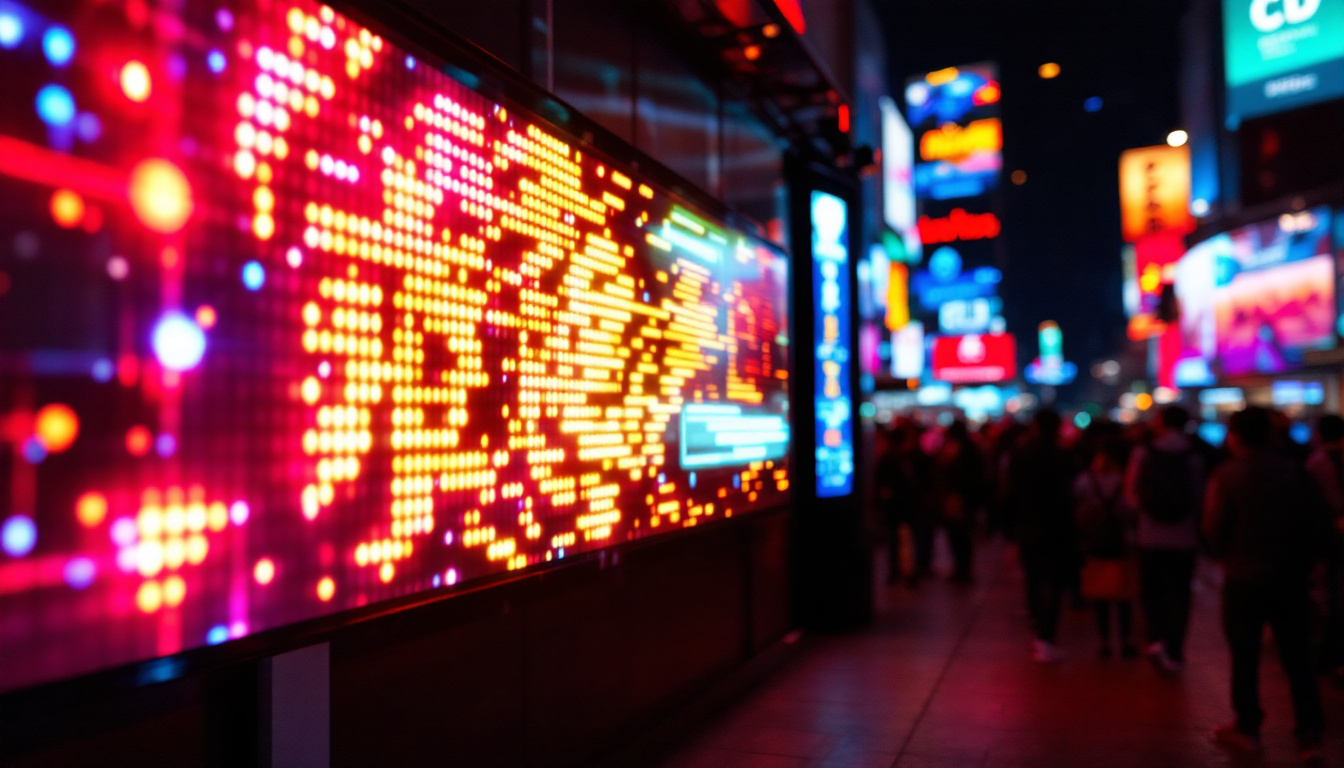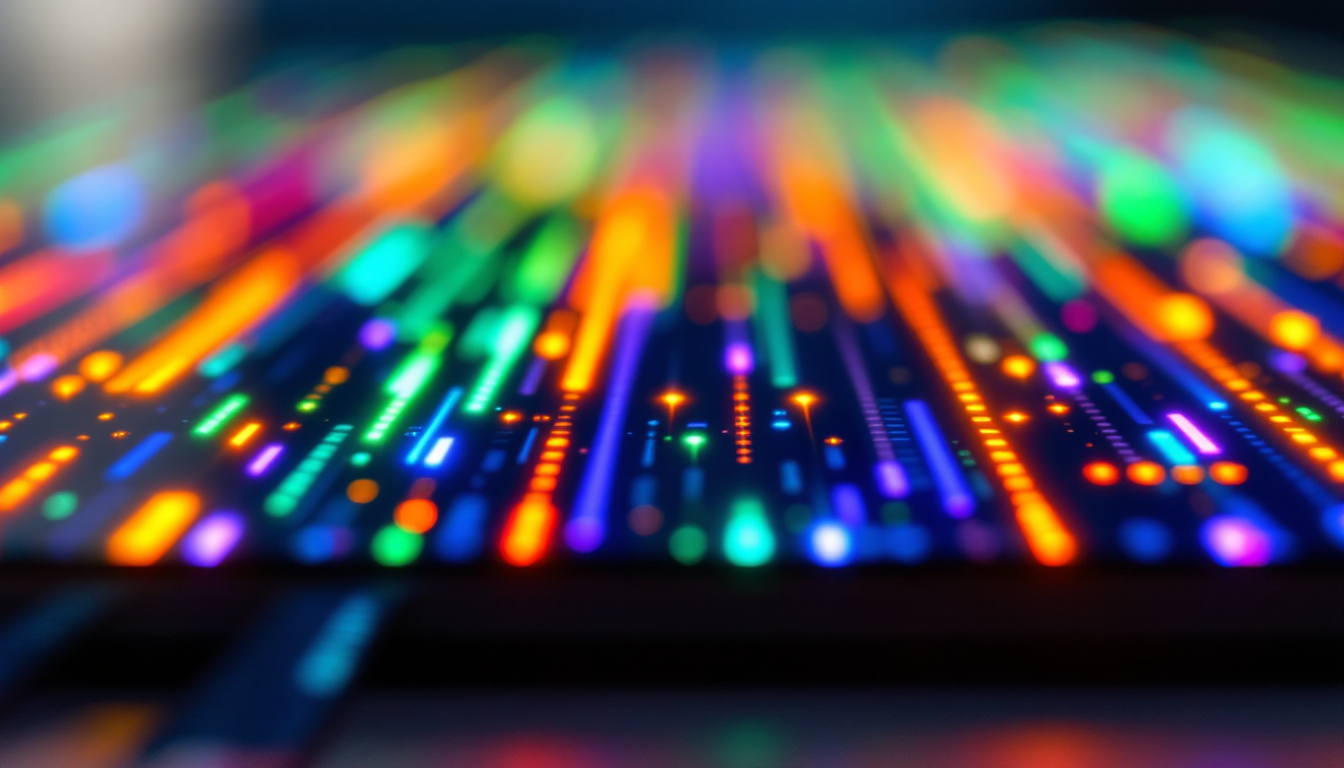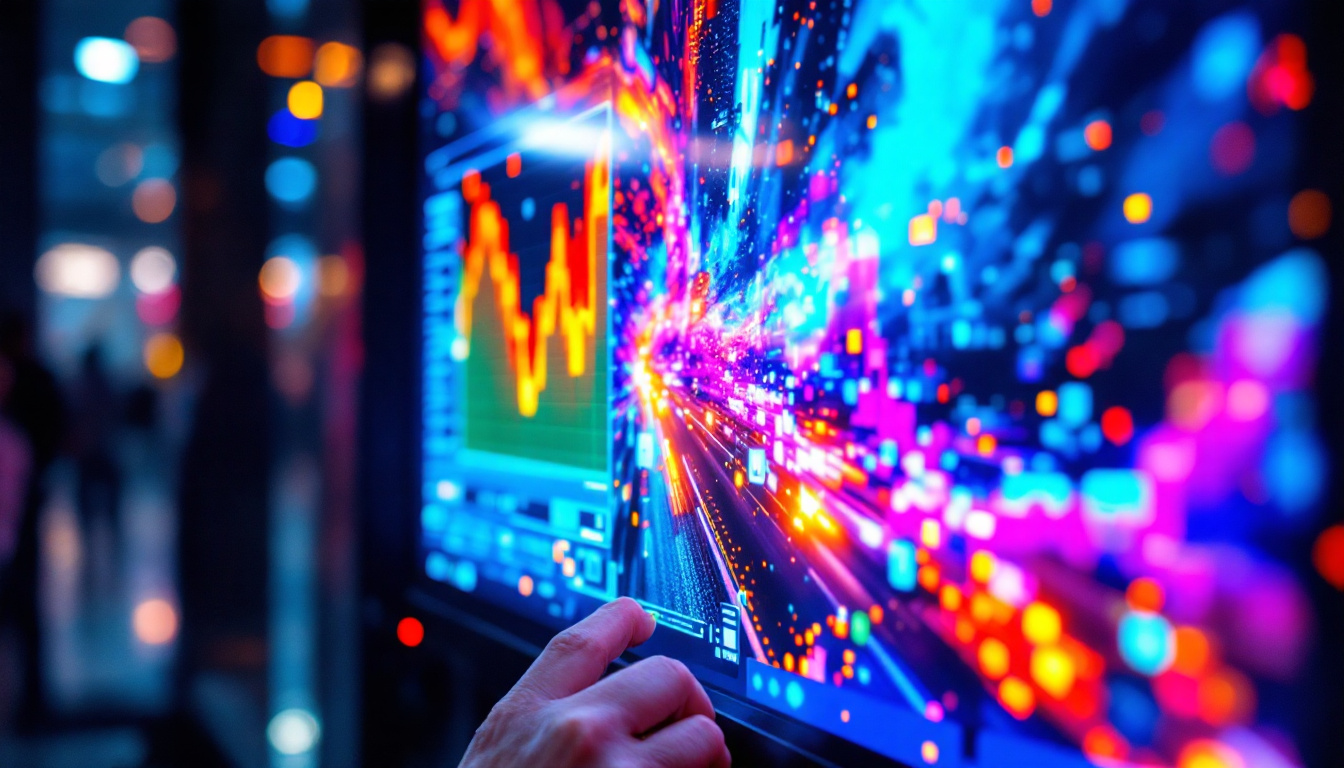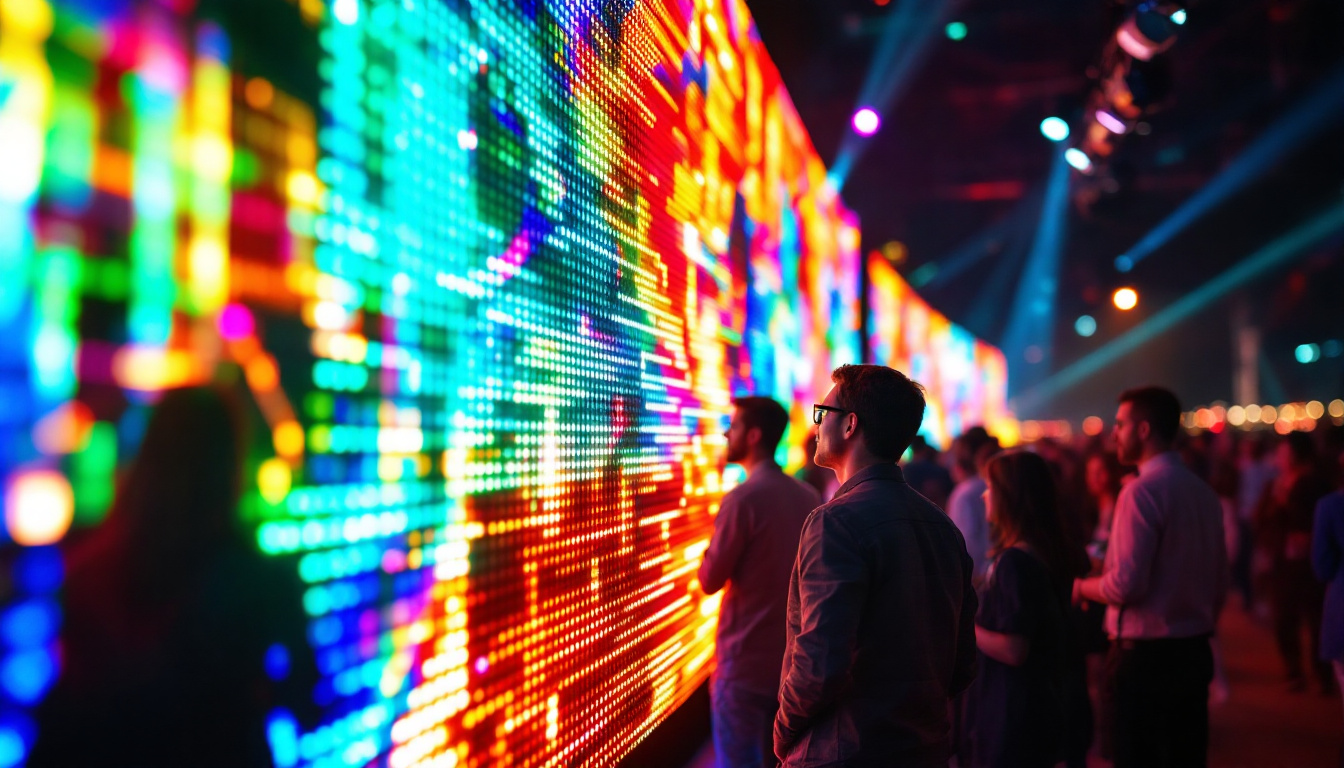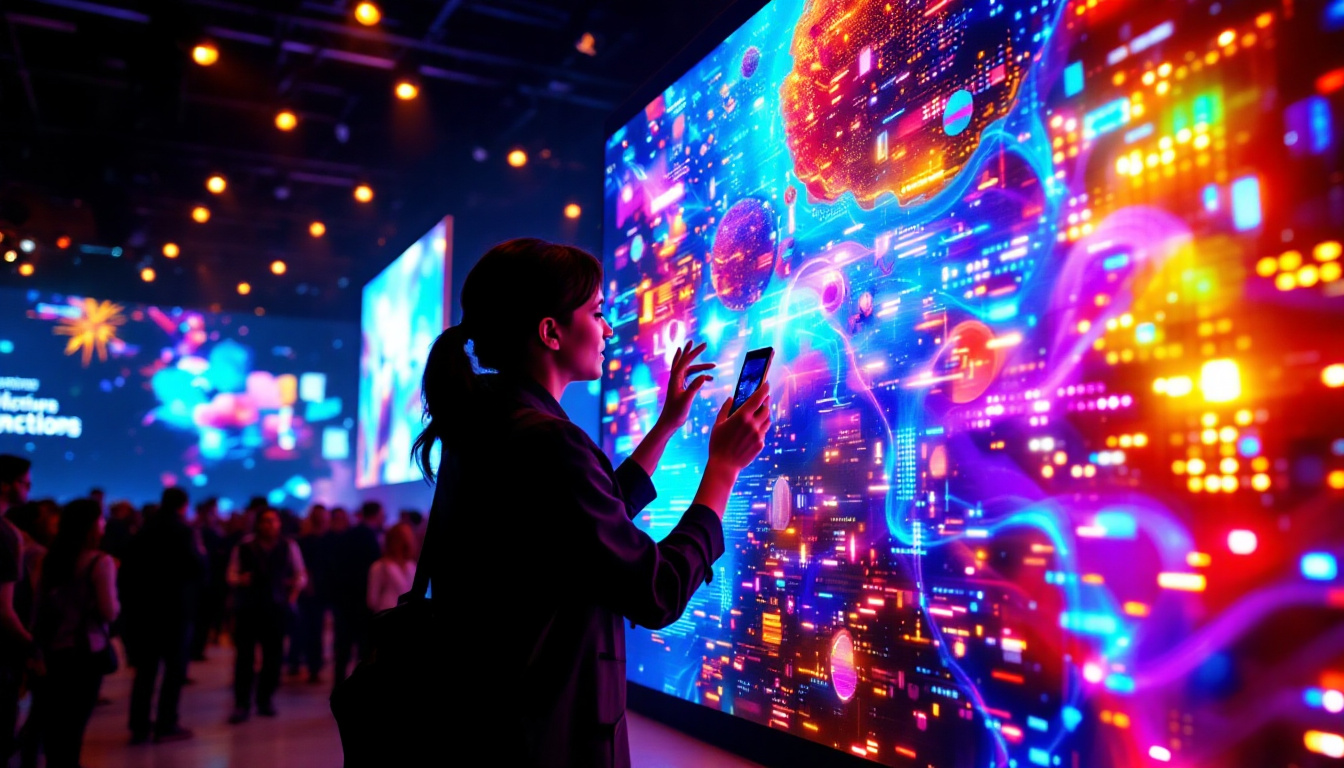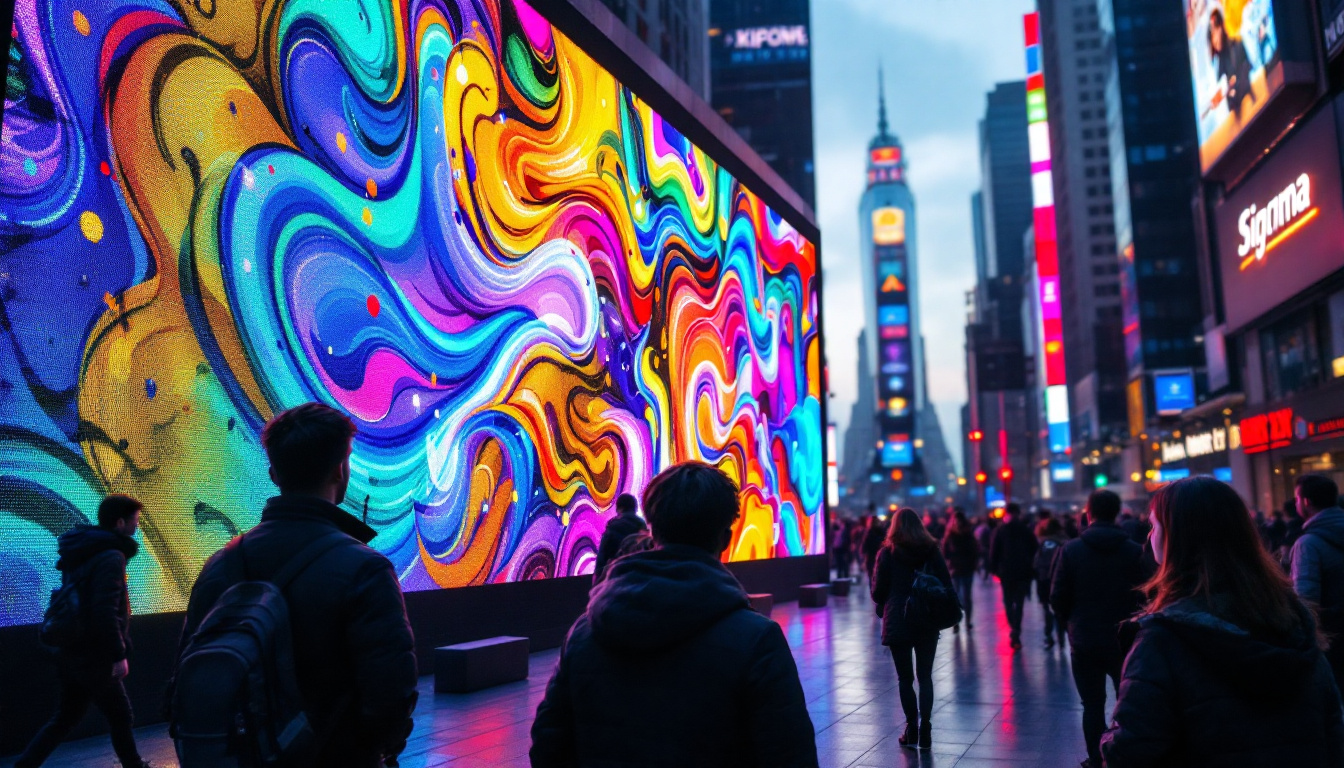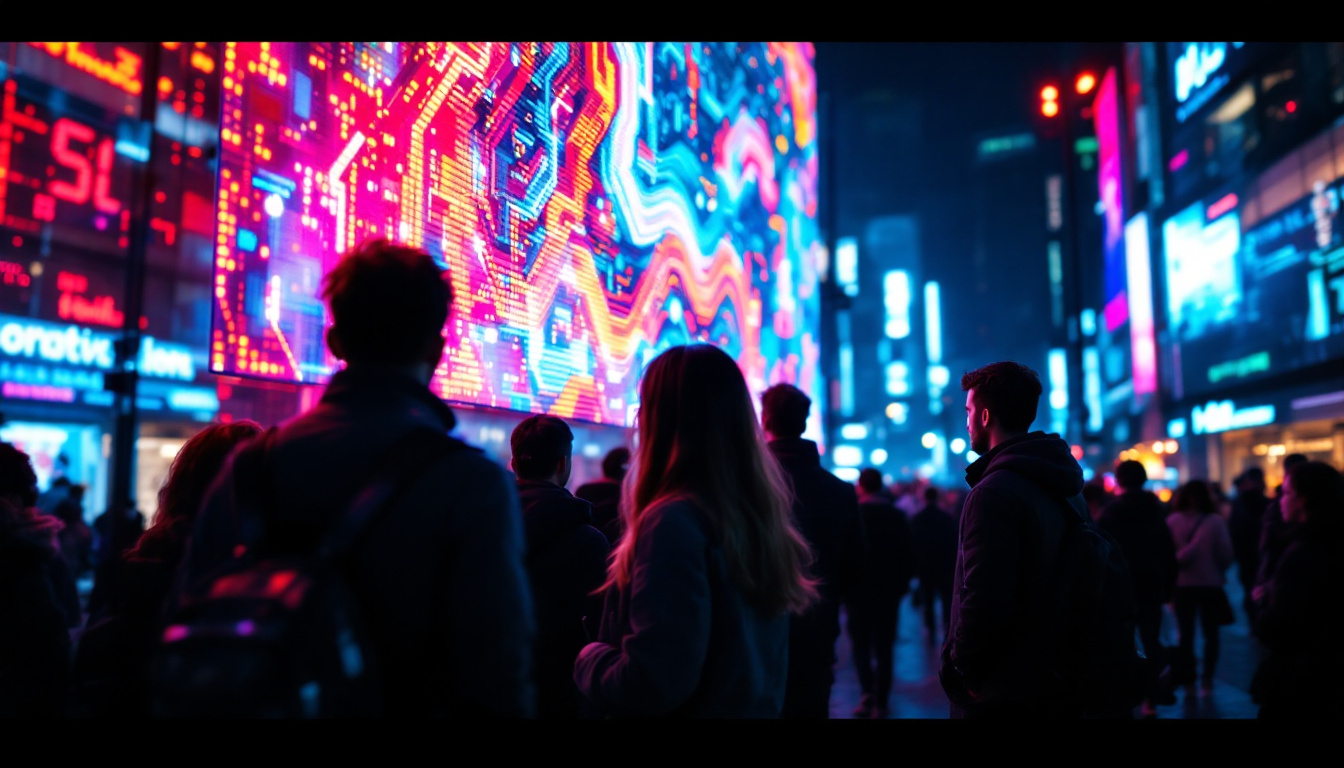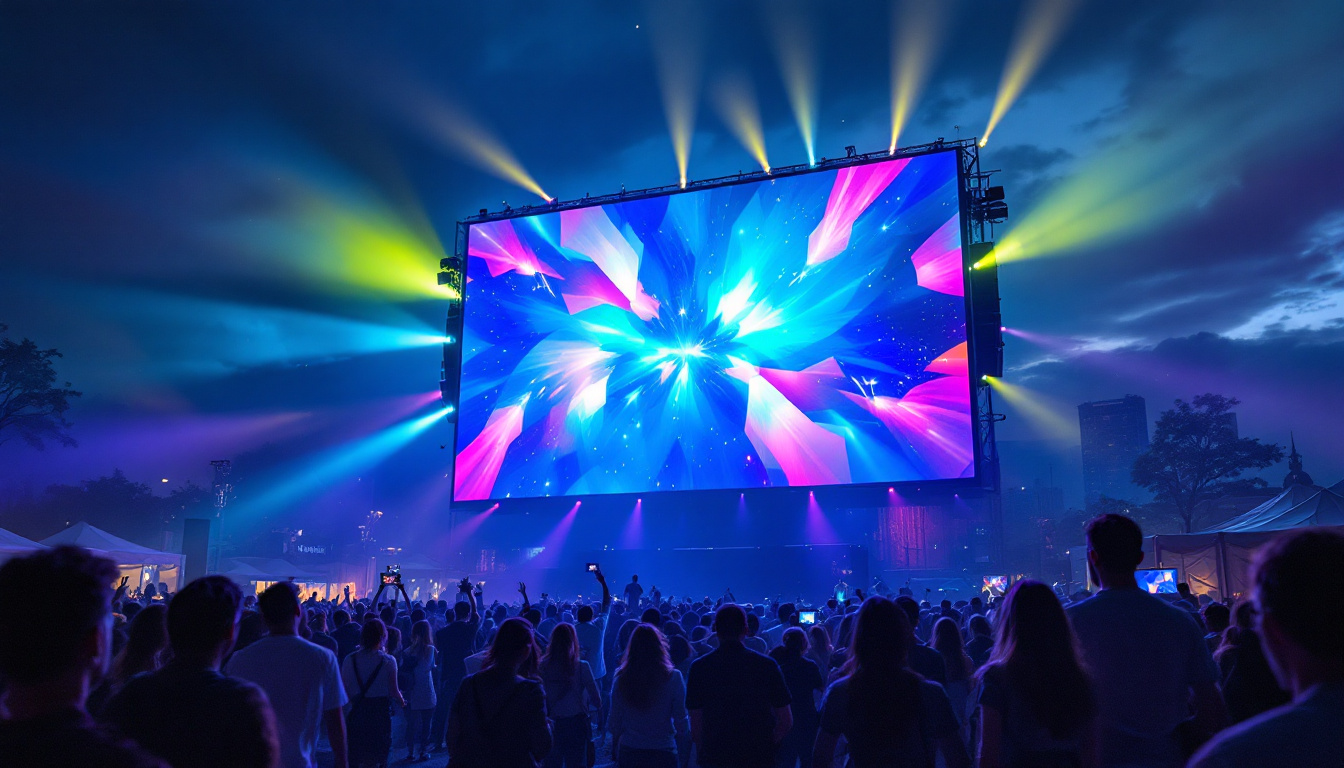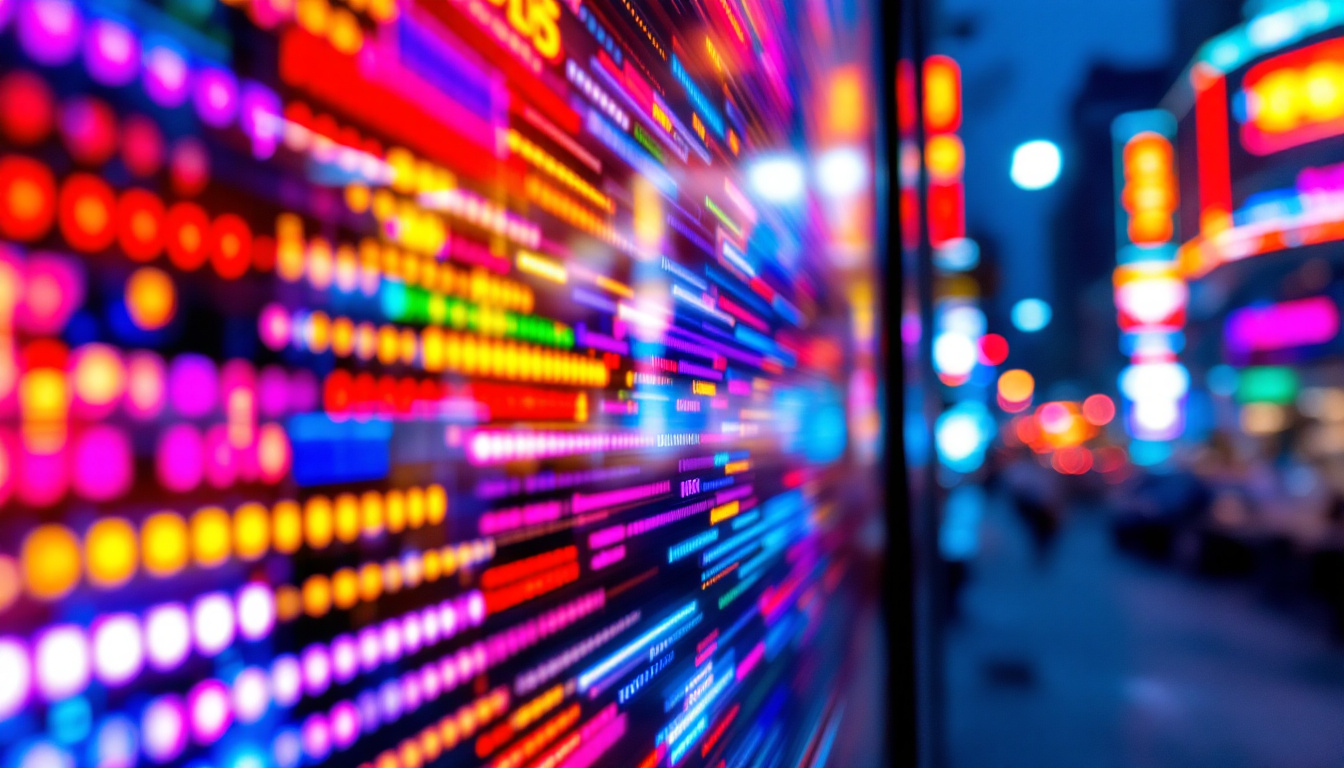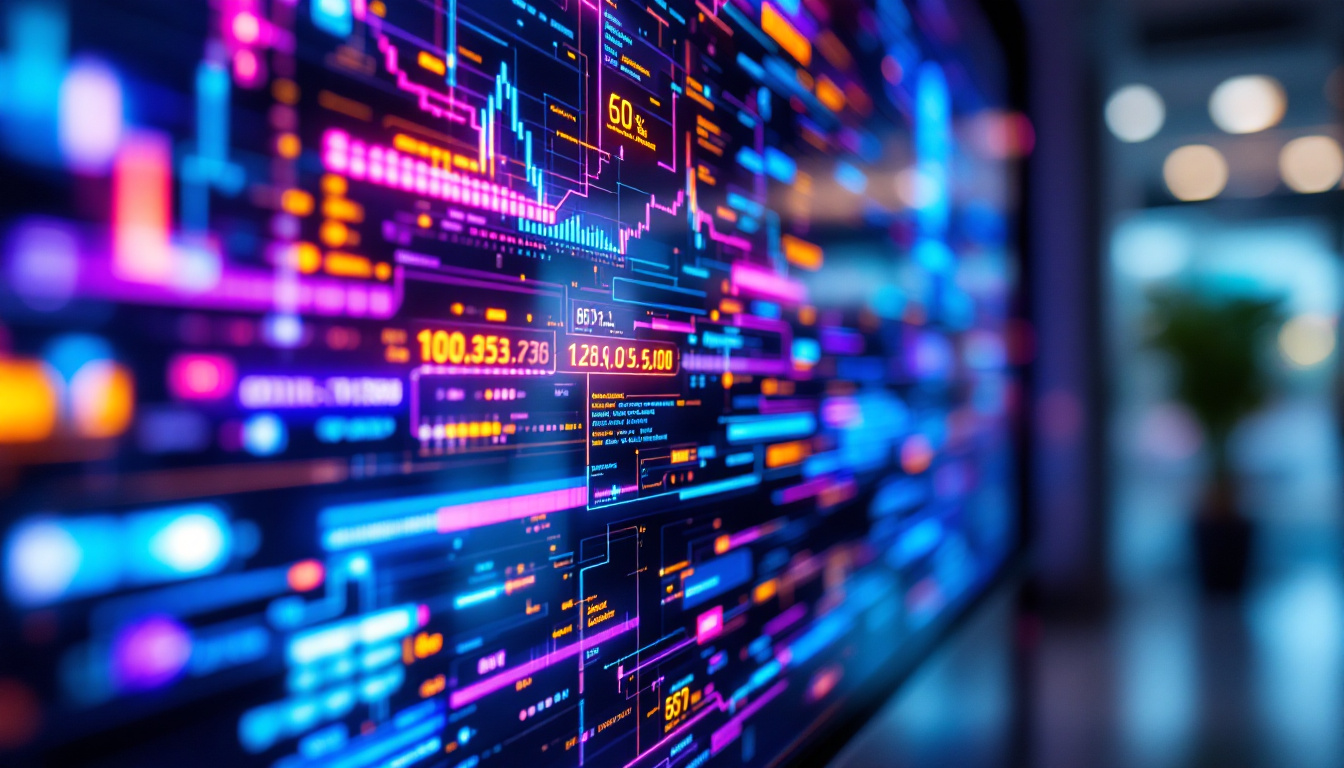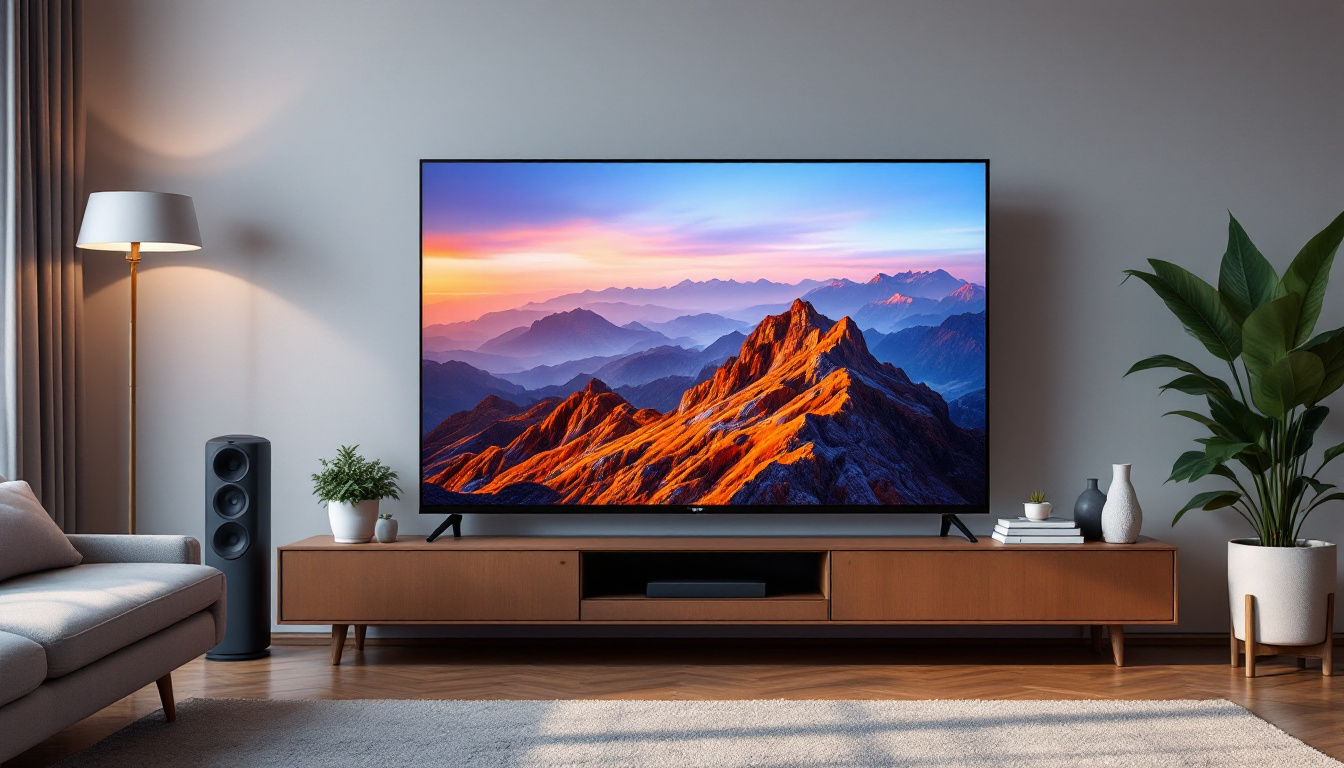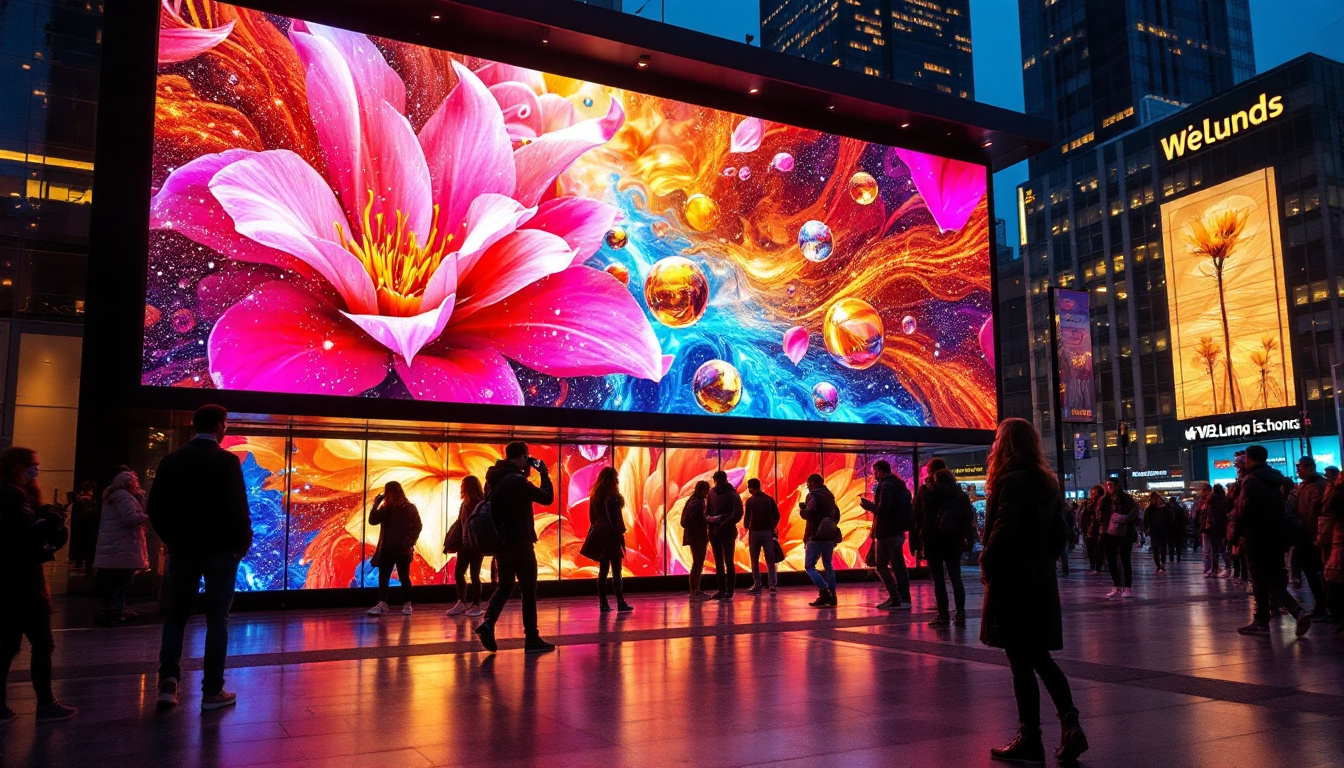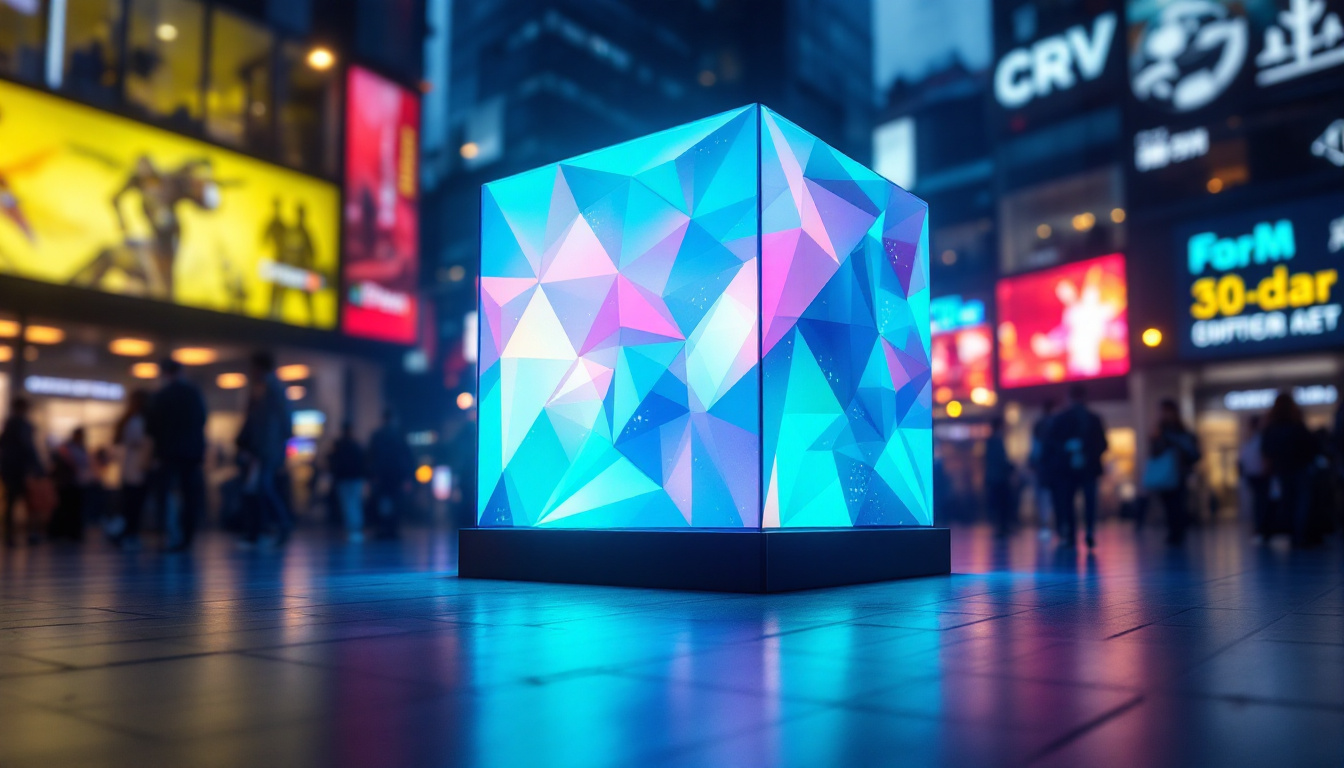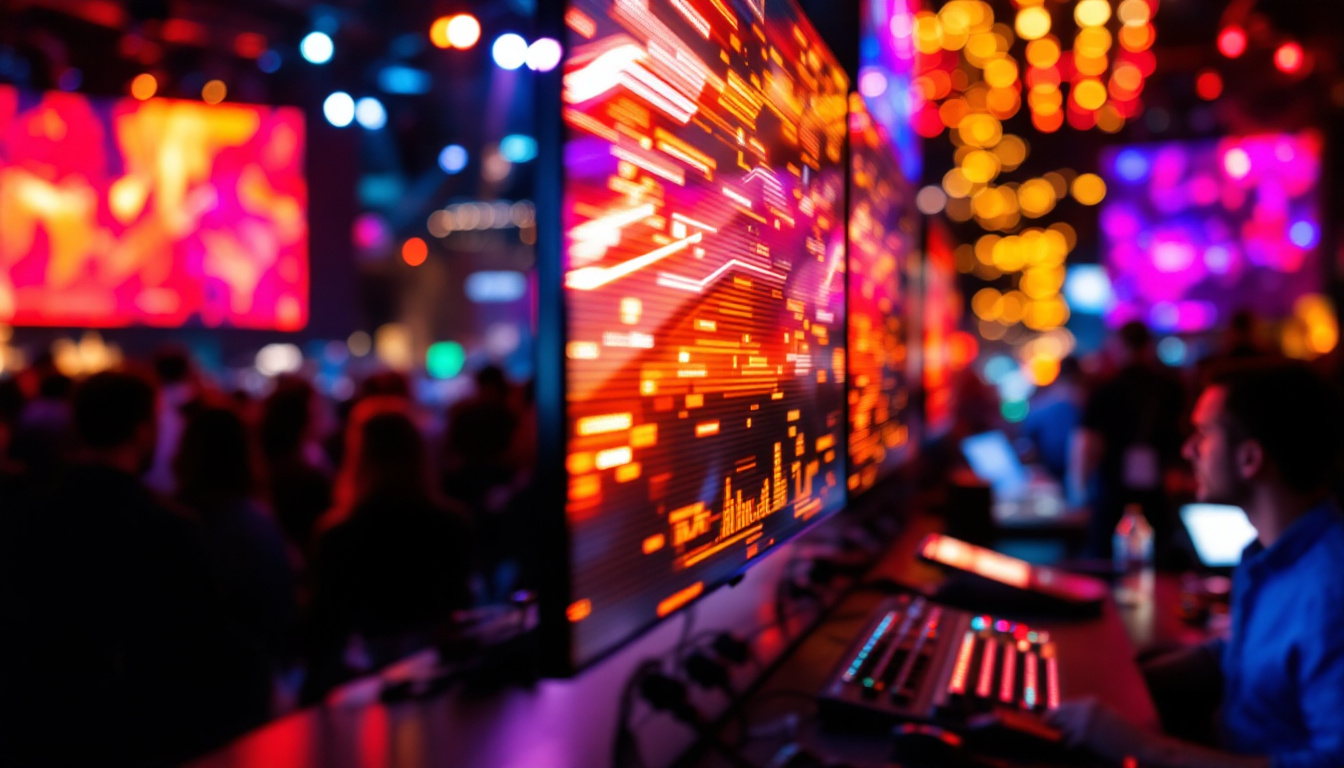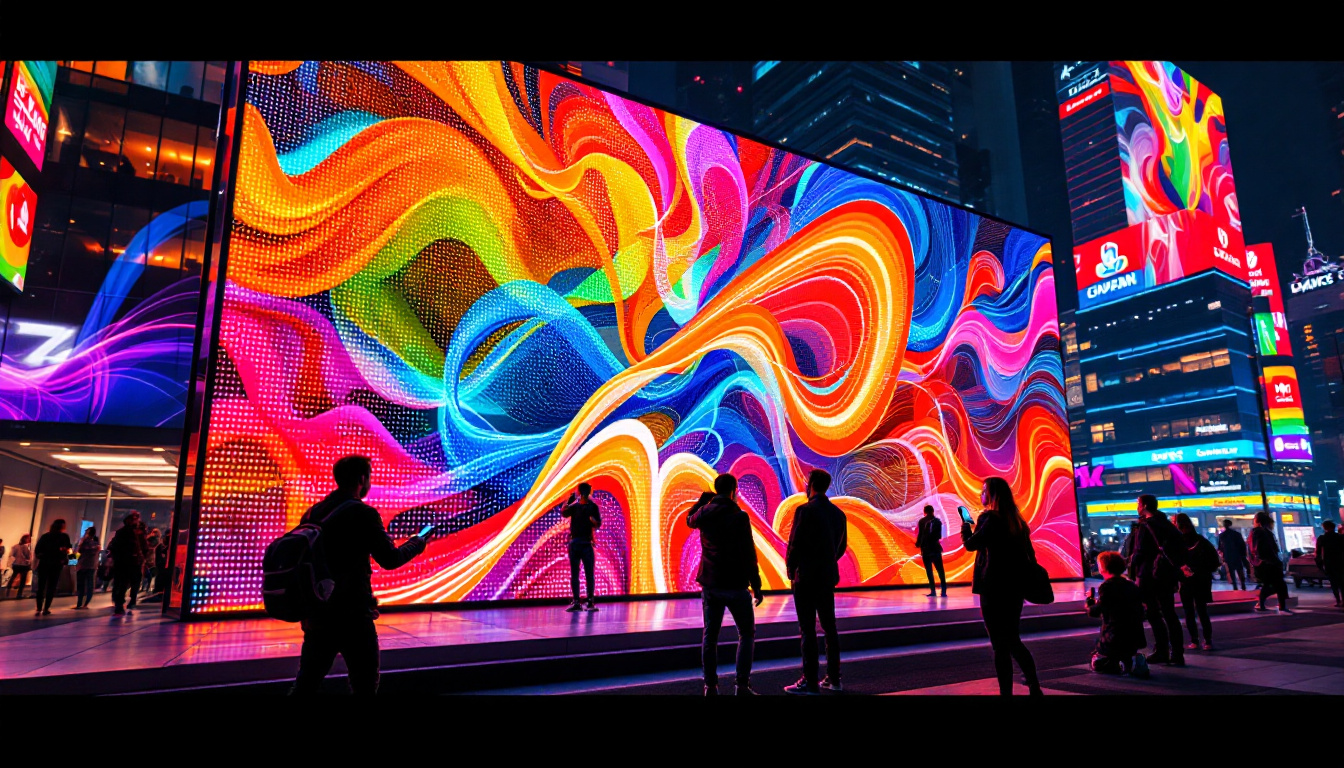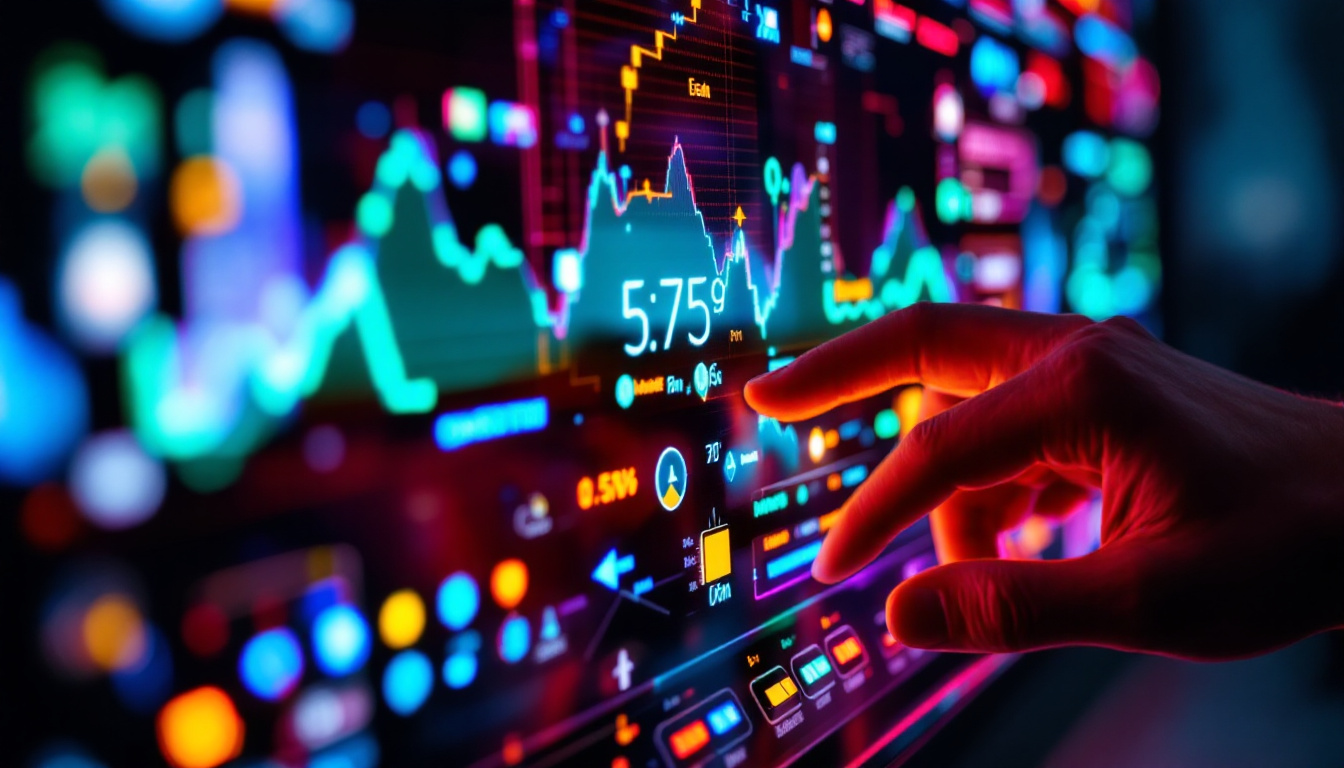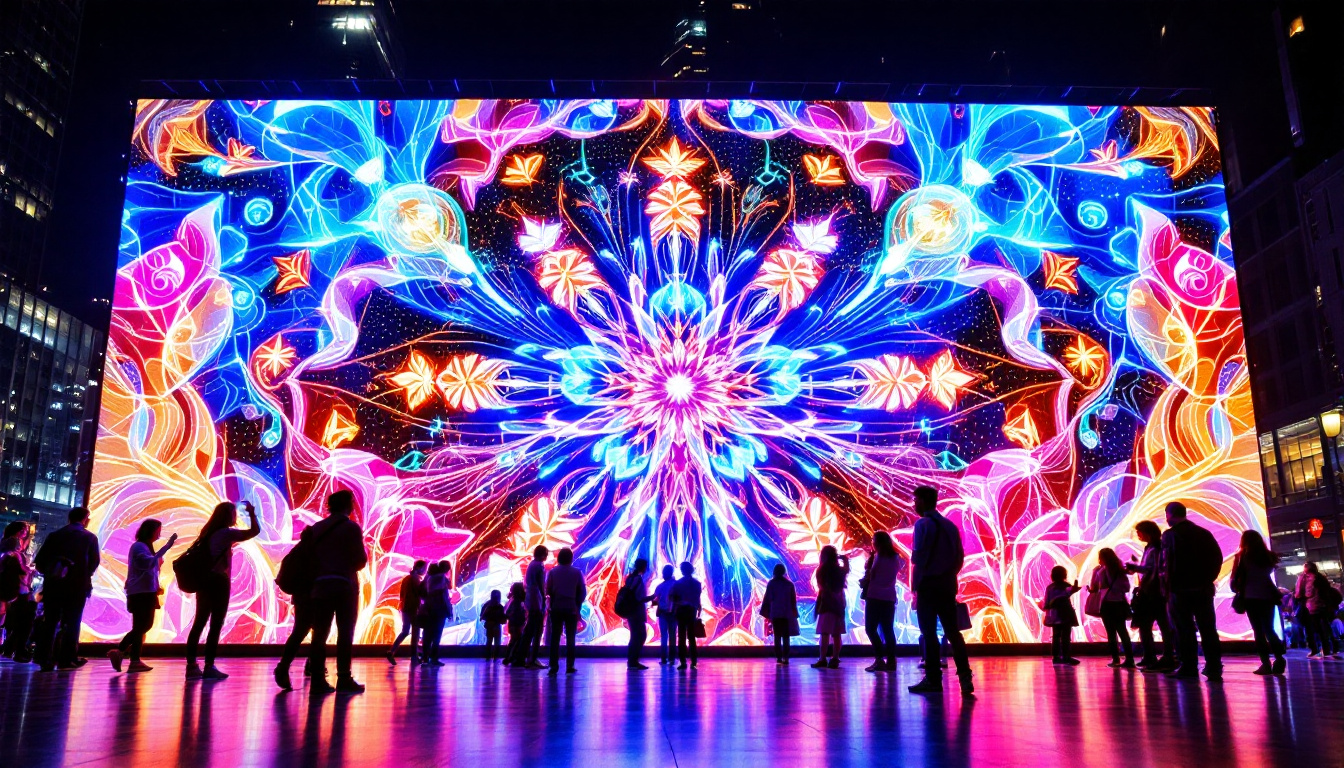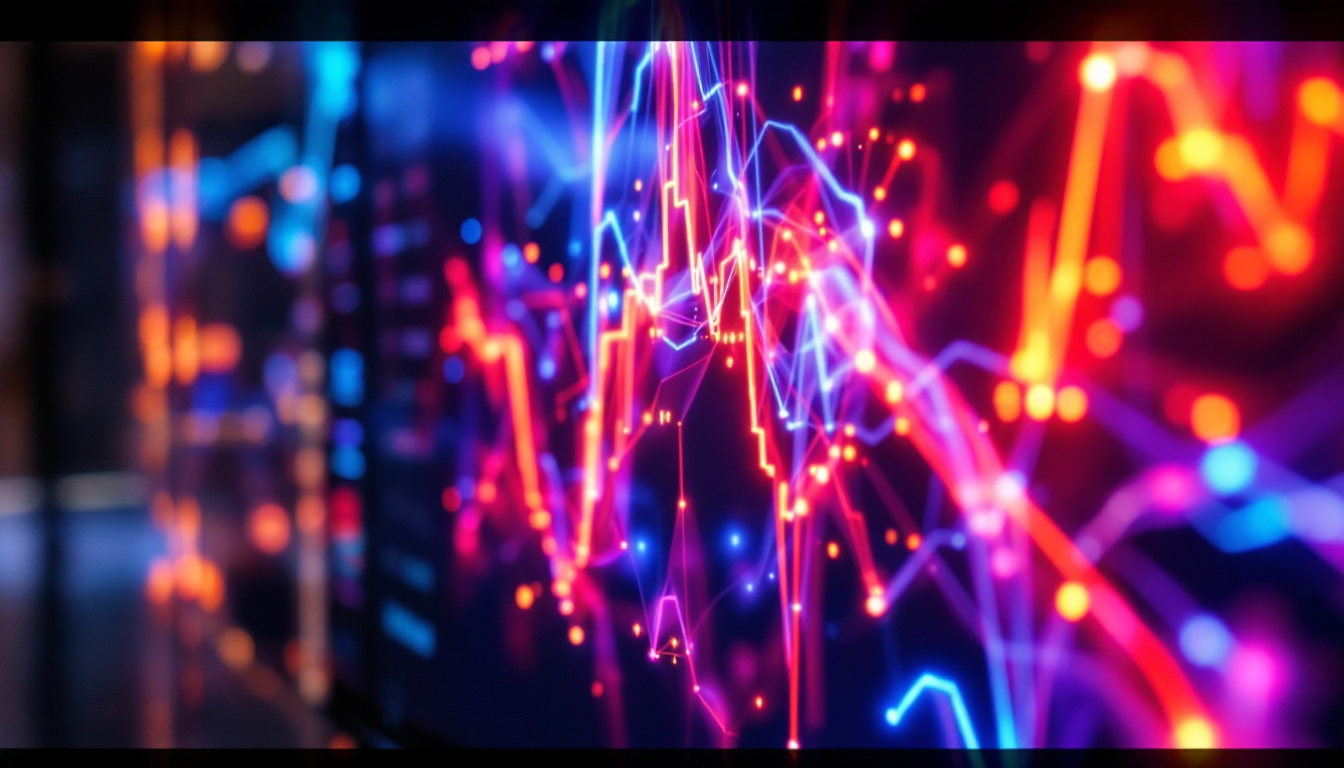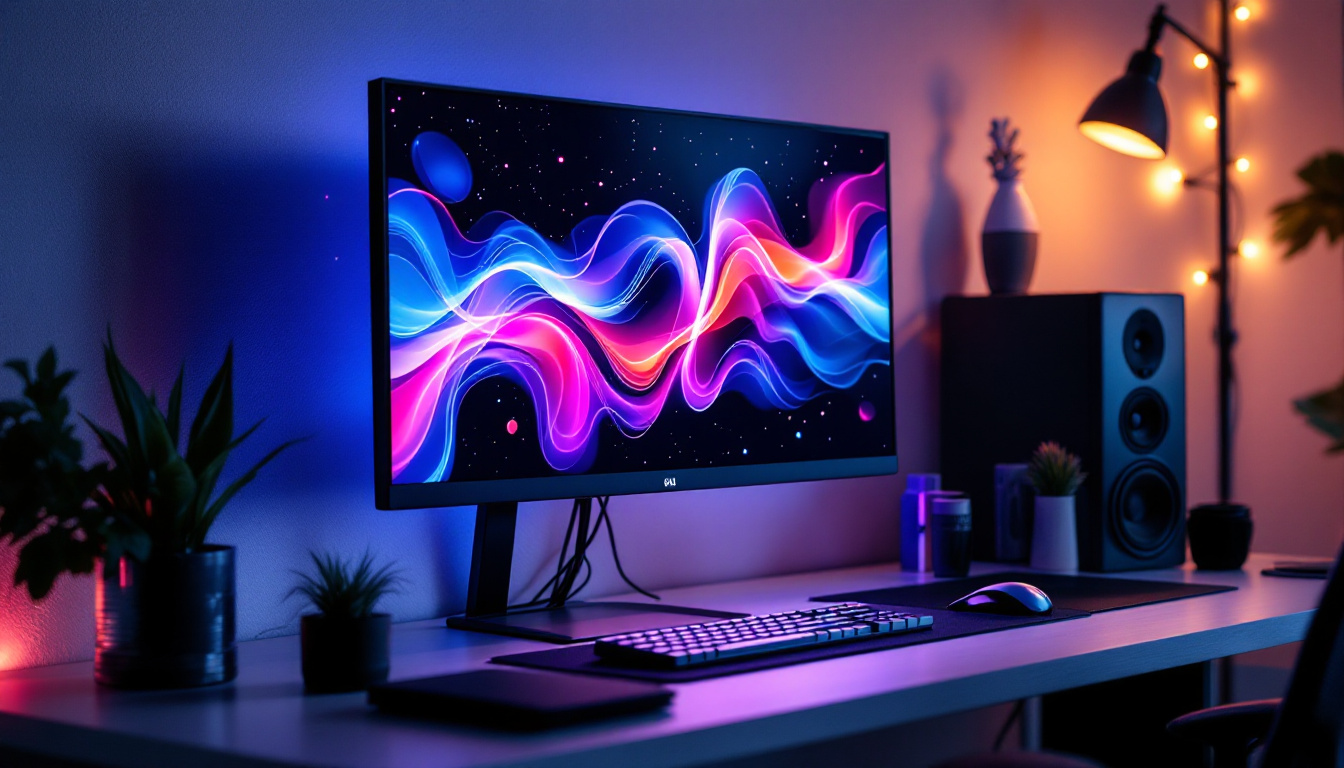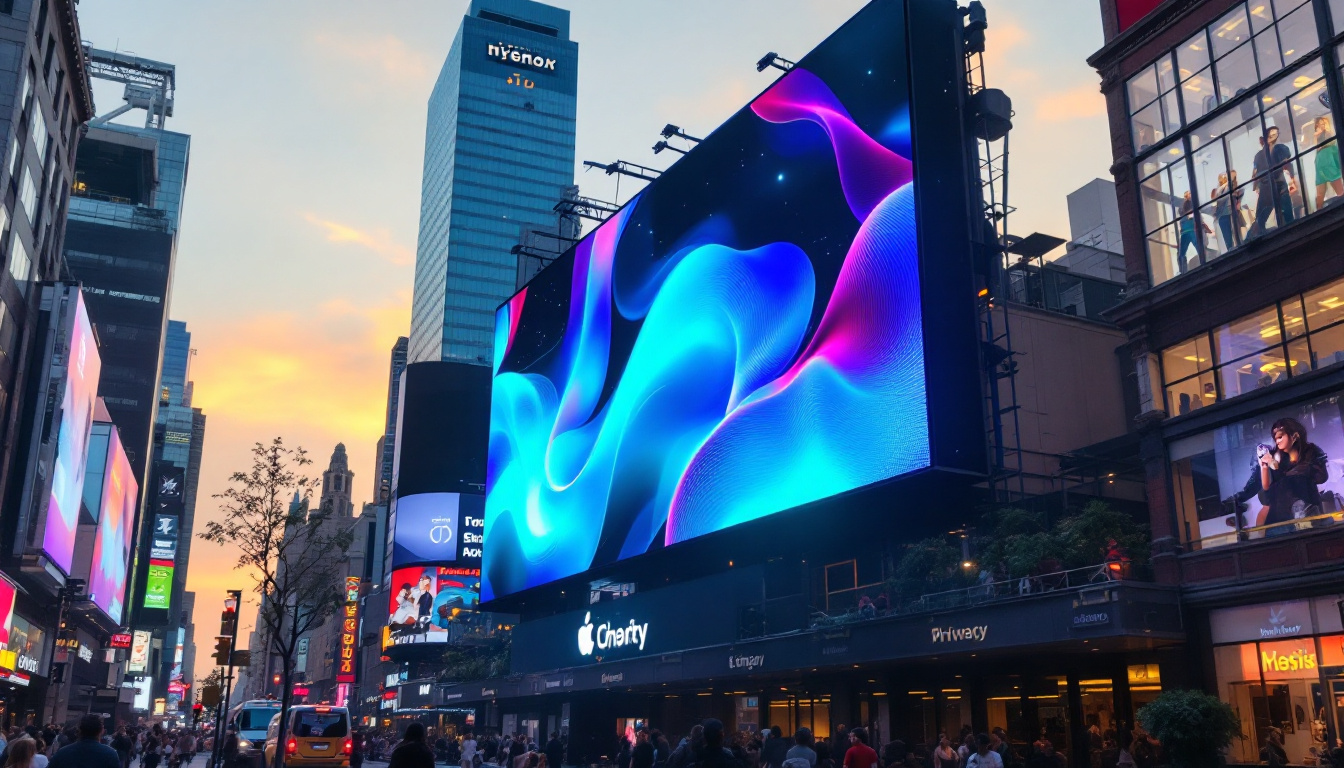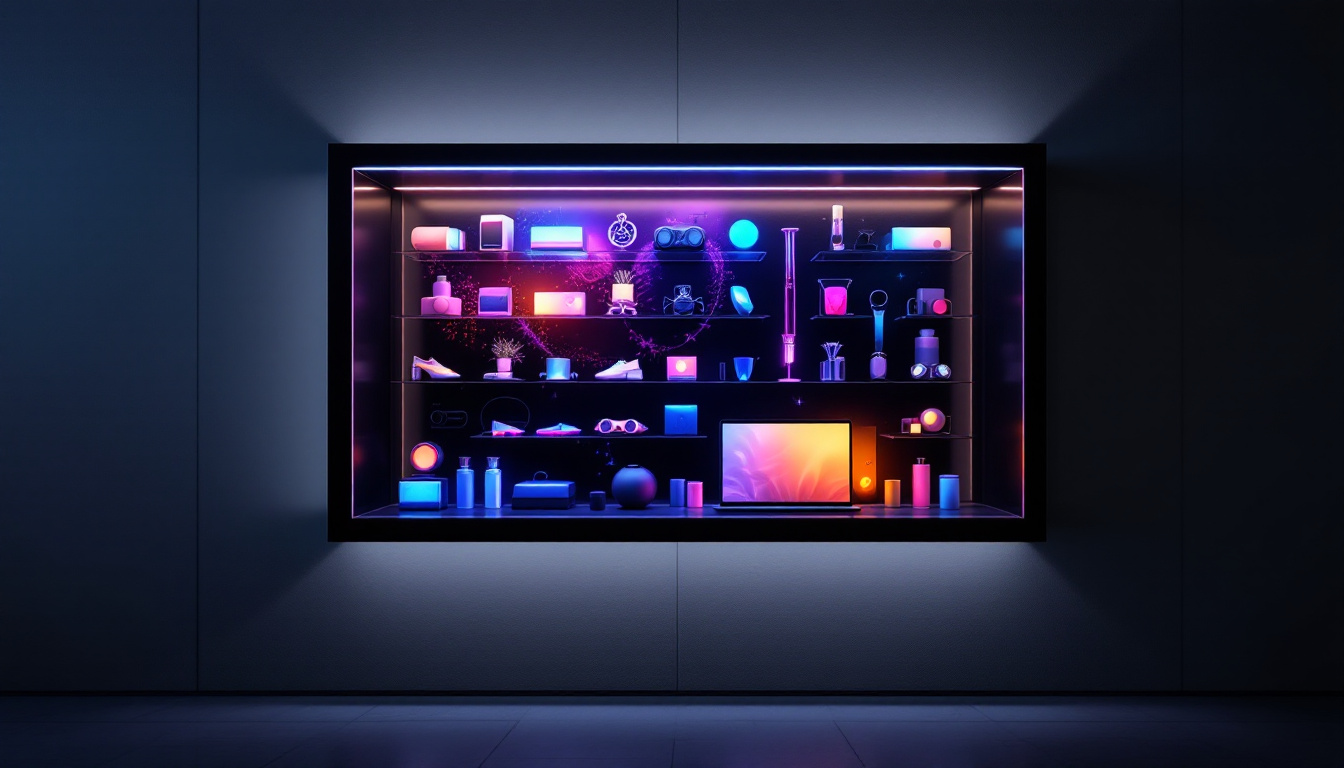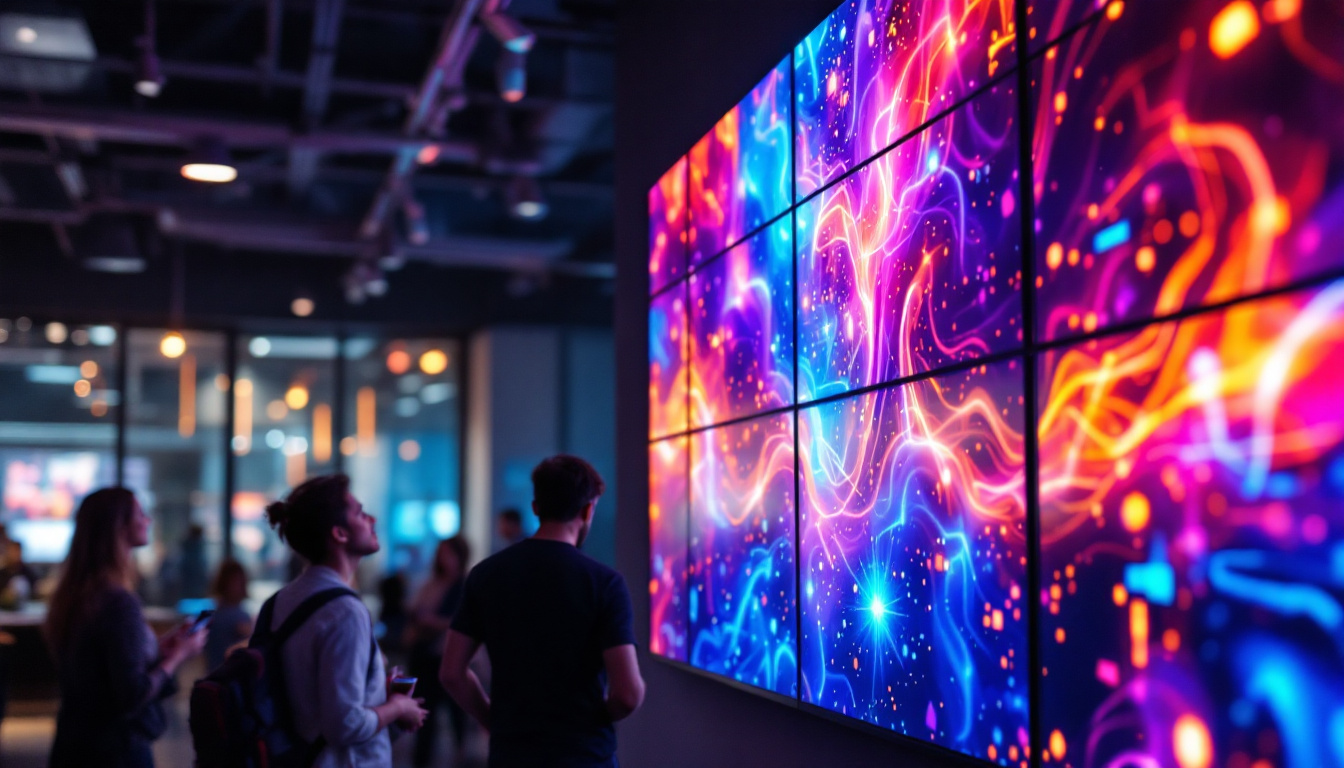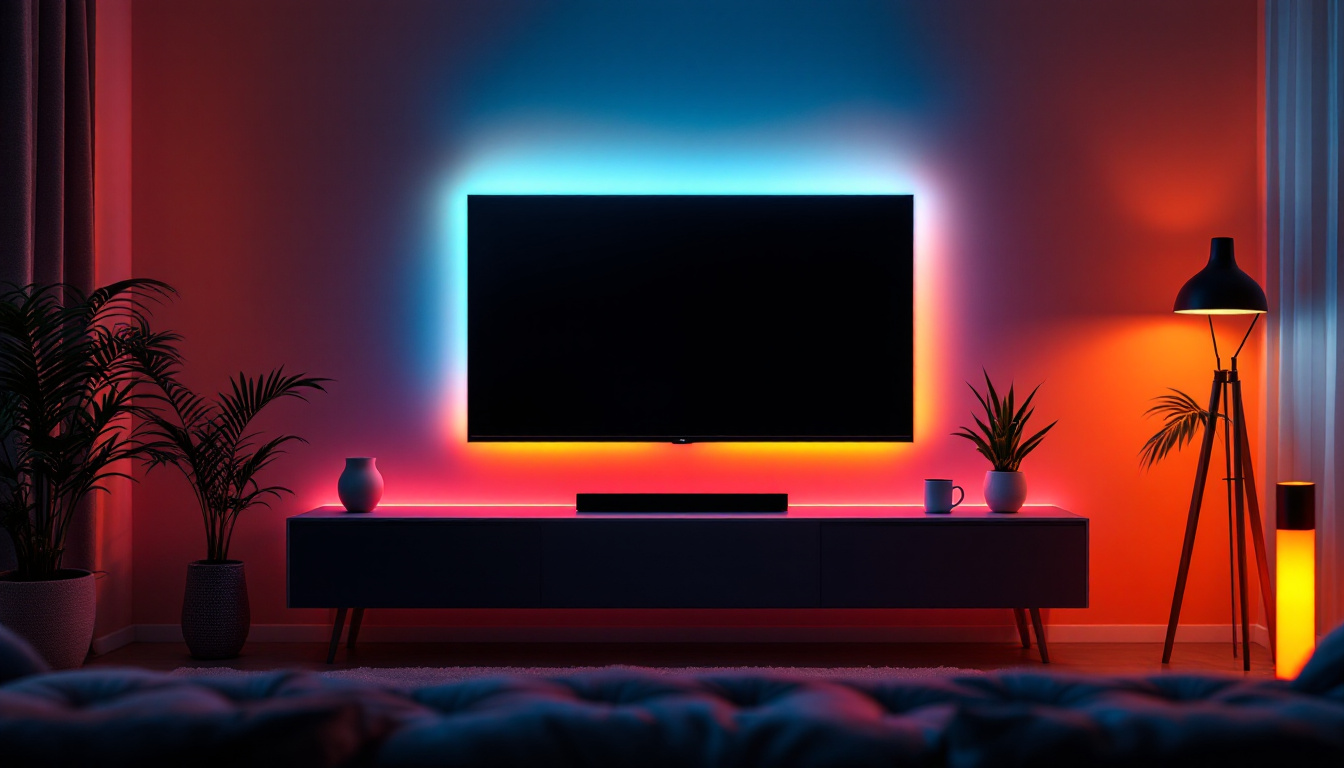In the modern world of visual technology, LED displays have become a cornerstone of effective communication and entertainment. From large-scale billboards to intimate indoor screens, LED technology has transformed the way information is conveyed. This article delves into the intricacies of LED displays, exploring their functionality, applications, and the advantages they offer over traditional display technologies.
Understanding LED Technology
LED, which stands for Light Emitting Diode, is a semiconductor device that emits light when an electric current passes through it. This technology has revolutionized the display industry due to its efficiency, brightness, and versatility. Unlike traditional displays that rely on backlighting, LED displays use individual diodes to create images, resulting in vibrant colors and deep contrasts. The compact nature of LEDs also allows for thinner and lighter designs, making them ideal for modern applications ranging from smartphones to large-scale outdoor billboards.
Moreover, the longevity of LED technology is another significant advantage. LEDs can last tens of thousands of hours, far exceeding the lifespan of traditional incandescent or fluorescent bulbs. This durability not only reduces the need for frequent replacements, which can be costly and time-consuming, but also contributes to lower overall energy consumption. As consumers and businesses alike become more environmentally conscious, the shift towards LED technology is seen as a crucial step in promoting sustainability in lighting and display solutions.
The Basics of LED Operation
At the core of LED technology is the principle of electroluminescence. When electrons move through the semiconductor material of the diode, they release energy in the form of photons, which is perceived as light. The color of the emitted light depends on the materials used in the diode’s construction. By combining red, green, and blue (RGB) LEDs, a full spectrum of colors can be produced, allowing for high-quality image reproduction. This RGB combination is the foundation for color mixing in various applications, enabling everything from vibrant television displays to intricate stage lighting designs.
Additionally, advancements in LED technology have led to the development of smart LEDs, which can be controlled via mobile apps or integrated into smart home systems. These innovations allow users to adjust brightness, color temperature, and even create dynamic lighting effects that can change according to the time of day or specific activities. Such versatility not only enhances the user experience but also opens up new possibilities for creative expression in both residential and commercial settings.
Types of LED Displays
LED displays come in various forms, each designed for specific applications. The most common types include:
- Direct View LED (DVLED): These displays consist of individual LEDs arranged in a grid, allowing for high-resolution images and seamless integration in large formats. They are particularly popular for outdoor advertising and large venue displays due to their brightness and visibility in daylight conditions.
- LED-backlit LCD: This technology uses LEDs to illuminate an LCD panel, providing improved brightness and energy efficiency compared to traditional fluorescent backlighting. This hybrid approach allows for thinner screens while maintaining excellent image quality, making it a preferred choice for televisions and computer monitors.
- Organic LED (OLED): OLED displays utilize organic compounds that emit light, offering superior contrast and color accuracy, especially in darker settings. The flexibility of OLED technology also allows for curved and bendable screens, paving the way for innovative designs in consumer electronics.
In addition to these common types, there are also specialized LED displays such as MicroLED and MiniLED, which are gaining traction in the market. MicroLED technology utilizes microscopic LEDs to create images, providing exceptional brightness and energy efficiency, while MiniLED enhances traditional LCD displays by using smaller LED backlights for improved contrast and color performance. These advancements signify the ongoing evolution of LED technology, catering to the ever-growing demand for higher quality visuals and more immersive experiences.
Applications of LED Displays
The versatility of LED displays makes them suitable for a wide range of applications across various industries. Their ability to deliver high-quality visuals in both indoor and outdoor settings has led to their widespread adoption.
Advertising and Marketing
One of the most prominent applications of LED displays is in advertising. Digital billboards and signage leverage the brightness and clarity of LED technology to capture the attention of passersby. These displays can be easily updated with new content, allowing businesses to promote products and services in real time.
Moreover, the dynamic nature of LED displays enables advertisers to showcase videos, animations, and interactive content, enhancing viewer engagement. This adaptability is particularly beneficial in high-traffic areas where traditional static signage may go unnoticed.
Entertainment and Events
In the entertainment industry, LED displays have become essential for concerts, sporting events, and theatrical performances. Large-scale LED screens provide audiences with immersive experiences, displaying live feeds, graphics, and special effects that enhance the overall atmosphere.
Additionally, LED technology is increasingly used in stage design, allowing for creative lighting solutions that can transform a performance space. The flexibility in size and shape of LED panels enables designers to create unique visual experiences tailored to specific events.
Corporate and Educational Settings
In corporate environments, LED displays are utilized for presentations, meetings, and training sessions. Their high visibility ensures that information is conveyed clearly, even in brightly lit rooms. Furthermore, many organizations use LED displays for digital signage, providing employees and visitors with real-time updates and important announcements.
Educational institutions also benefit from LED technology, employing it in classrooms and auditoriums to facilitate interactive learning. The vibrant visuals help to maintain student engagement and enhance the educational experience.
Advantages of LED Displays
LED displays offer numerous advantages over traditional display technologies, making them a preferred choice for many applications. Understanding these benefits can help organizations make informed decisions when selecting display solutions.
Energy Efficiency
One of the standout features of LED displays is their energy efficiency. Compared to traditional incandescent or fluorescent lighting, LEDs consume significantly less power while delivering superior brightness. This not only reduces operational costs but also contributes to a smaller carbon footprint, making LEDs an environmentally friendly choice.
Longevity and Durability
LED displays are known for their longevity, often lasting tens of thousands of hours before requiring replacement. This durability is particularly advantageous for outdoor applications, where displays are exposed to various weather conditions. Unlike traditional screens, which may suffer from burn-in or fading, LED technology maintains consistent performance over time.
High Brightness and Contrast
The brightness of LED displays is another key advantage. They can produce vivid images even in direct sunlight, making them ideal for outdoor advertising and public displays. Additionally, the high contrast ratios achievable with LED technology enhance image quality, allowing for clearer and more dynamic visuals.
Challenges and Considerations
While LED displays offer numerous benefits, there are also challenges and considerations that potential users should be aware of. Understanding these factors can help ensure successful implementation and operation.
Initial Cost
One of the primary challenges associated with LED displays is their initial cost. The upfront investment can be substantial, particularly for large-scale installations. However, it is essential to consider the long-term savings associated with energy efficiency and reduced maintenance costs, which can offset the initial expenditure over time.
Technical Expertise
Implementing and maintaining LED display systems often requires specialized technical knowledge. Organizations may need to invest in training or hire professionals to ensure optimal performance and troubleshooting. This can add to the overall cost and complexity of the project.
Content Management
Effective content management is crucial for maximizing the impact of LED displays. Organizations must develop strategies for creating and updating content regularly to keep it fresh and engaging. This requires a commitment to ongoing management and may necessitate additional resources.
Future Trends in LED Display Technology
The landscape of LED display technology is continually evolving, with advancements that promise to enhance performance and expand applications. Staying informed about these trends can help organizations remain competitive and leverage the latest innovations.
MicroLED Technology
MicroLED is an emerging technology that offers even greater resolution and efficiency than traditional LED displays. By utilizing tiny individual LEDs, MicroLED displays can achieve higher pixel densities, resulting in sharper images and improved color accuracy. This technology is expected to play a significant role in the future of high-end displays, particularly for applications requiring exceptional visual quality.
Flexible and Transparent Displays
Another exciting trend is the development of flexible and transparent LED displays. These innovations allow for creative applications in architecture and design, enabling displays to be integrated into windows, walls, and other surfaces without obstructing visibility. This opens up new possibilities for advertising, art installations, and interactive environments.
Integration with Smart Technology
As smart technology continues to advance, LED displays are increasingly being integrated with IoT (Internet of Things) systems. This integration allows for real-time data display, interactive content, and enhanced user experiences. For example, smart city applications can leverage LED displays to provide live updates on traffic, weather, and events, creating a more connected and informed community.
Conclusion
LED displays have fundamentally changed the way information is presented and consumed across various sectors. Their energy efficiency, longevity, and versatility make them an attractive option for businesses and organizations looking to enhance their communication strategies. While challenges exist, the benefits of LED technology far outweigh the drawbacks, especially as advancements continue to shape the future of display solutions.
As industries evolve and the demand for high-quality visual communication grows, LED displays will undoubtedly remain at the forefront of technological innovation. By understanding the intricacies of LED technology and its applications, organizations can make informed decisions that lead to successful outcomes and enhanced audience engagement.
Discover LumenMatrix LED Display Solutions
Ready to elevate your visual communication with the latest in LED display technology? LumenMatrix is at the cutting edge, offering a diverse range of LED display modules designed to make your brand shine. Whether you’re in need of an Indoor LED Wall Display, a dynamic Outdoor LED Wall Display, or specialized solutions like Vehicle LED Displays and LED Sports Displays, LumenMatrix has you covered. Embrace the future of digital signage with our All-in-One LED Displays, LED Transparent Displays, and more. Check out LumenMatrix LED Display Solutions today and transform your space into a captivating visual experience.


